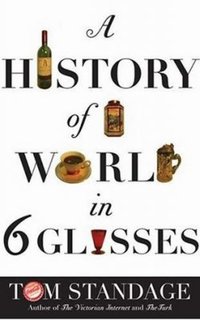My mentor at Wabash College, Ben Rogge, was a friend of Pierre Goodrich, the founder of Liberty Fund. They both were great admirers of Adam Smith. Adam Smith believed that inherited property should not be encumbered with restrictions on how future generations used the property. The practice is sometimes called ‘ruling with a dead hand.’ When Liberty Fund was proposed, Rogge suggested that it be set up so that all of the funds would be exhausted at some pre-established time after Goodrich’s death. On this one proposal, Rogge failed to convince Goodrich of the wisdom of Adam Smith’s advice.
Rogge was a supporter of Schumpeter’s idea that we flourish through creative destruction. Progress through creative destruction is harder to accomplish if inherited property is encumbered by ‘ruling with a dead hand.’ Rogge feared that as the decades passed, the inheritors of Liberty Fund would eventually, and substantially, diverge from Goodrich’s original values and hopes. Liberty Fund money helped Rogge make a movie on Adam Smith. Rogge sadly joked that eventually the inheritors of Liberty Fund would probably support making a movie on a famous socialist.
(I can’t remember the name of the socialist who Rogge jokingly mentioned, but I vaguely, vaguely think it might have been Ethel Rosenberg.)
(I base the lines above on my memories of comments by Ben Rogge in conversations and lectures.)
(p. M1) “After me, there won’t be any others,” says Roland Reisley, absorbing what it means to be the last original occupant of a Frank Lloyd Wright house. Reisley is sitting in his hexagonal living room on a rocky hill near Pleasantville, N.Y.
. . .
(p. M4) Despite the house’s pristine condition, the one thing he can’t do is turn it into a museum. It is part of a Westchester County neighborhood laid out by Wright himself in the late 1940s. The community, which Wright named Usonia, never achieved its founders’ ambitions—to become a kind of exurban co-op where everything was owned in common—but it is still a tightly knit community of 47 homes with shared amenities such as a pool and tennis courts. “The residents would not agree to a museum,” Reisley says.
. . .
But if he can’t turn it into a museum, he can execute a preservation easement, a legal document that will prevent future owners from making changes to the house.
. . .
Asked why he hasn’t executed an easement yet, after talking about doing so for years, Reisley says he is “trying to find language that protects what’s important but allows for some reasonable changes to be made. I am going to do it,” Reisley says. “I just haven’t gotten around to doing it. I’m a procrastinator.”
Then, too, his only living child has expressed concerns. Robert Reisley, a 65-year-old entrepreneur and private-equity investor in Philadelphia, says, “I don’t have an issue with a preservation easement on the exterior of the house.” But he says it’s possible he and his wife, or one of their adult children, might want to live in the house. “We might need to make a few necessary changes to the interior. And we might not be able to get permission. That’s my hesitation.”
For example, he says, “The hallway to the bedrooms is very dark. Wright was practical. If we’d asked him, he would have said, ‘Put a skylight there.’ But Wright’s not around, and the conservancy might not allow it.”
. . .
In Minneapolis, the Olfelt house was on the market for two years before a local couple with grown children bought it for $1.2 million in the Spring of 2018. Several months later, they filed plans with the city to add a 1,500-square-foot, $2 million wing to the original 2,600-square-foot house and alter some of the original interiors.
. . .
The Juneks created a website, olfelthouse.info, to explain their intentions. “The impetus for the addition and the minimal interior renovations,” they wrote, “is to address the meager space allocated to the master bedroom, to expand the kitchen to accommodate a large multi-generation family, and to ensure that the home be comfortable, accessible, and safe for aging in place.” The renovation was designed by the New York architecture firm Thread Collective. Photos on the firm’s website show a dining room in a space that used to contain Wright’s tiny galley kitchen, and a spacious new kitchen in what used to be two children’s bedrooms. The addition, which contains a master-bedroom suite over a new garage, is visible mainly from the back of the house. “We have now been living in the house for three years, are very happy with the results of the project,” John Junek wrote in an email.
. . .
Robert and Mary Walton chose not to burden their six children with a preservation easement, the same choice made by Gerte Shavin, Bette Pappas, and the Olfelts. All of them died knowing they had no control over the future of their houses. “Its fate is entirely in the hands of the next owner,” Paul Olfelt told me in a phone message after vacating his house in 2017. Sounding emotional, he added, “I think we were good stewards of the house, and we assume that anyone who buys it will be the same.”
Reisley still has a chance to execute an easement. Will he? The easement would operate in perpetuity, and perpetuity, the 99-year-old homeowner says, “is a very long time.”
For the full story, see:
Fred A. Bernstein. “The Last Original Owner of a Frank Lloyd Wright House.” The Wall Street Journal (Wednesday, June 30, 2023): M1 & M4.
(Note: ellipses added.)
(Note: the online version of the story was updated June 27, 2023, and has the title “Frank Lloyd Wright Built 120 Homes Near the End of His Life. Just One Original Owner Remains.”)




